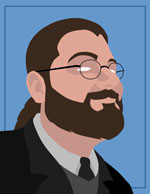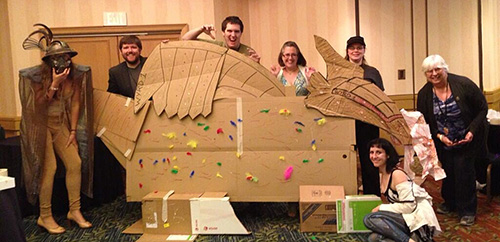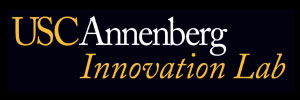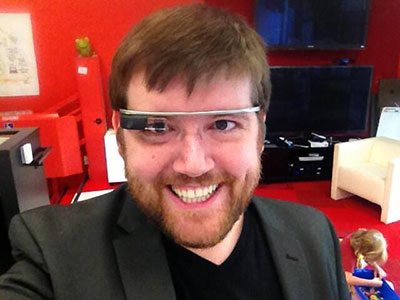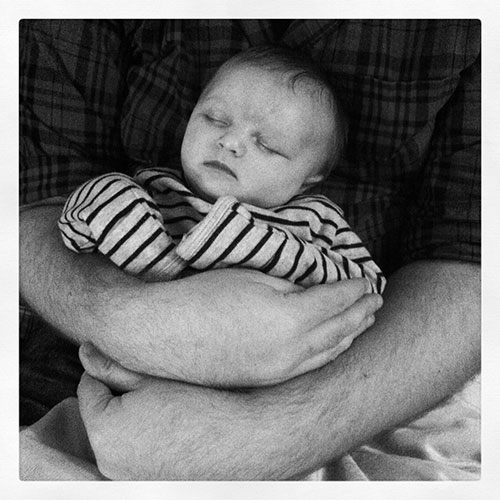|
|
A few weeks ago, the Annenberg Innovation Lab held our Spring 2014 Think & Do event. Much like the “New Screens: Re-Envisioning Home Entertainment” Think & Do we held back in the fall, this one focused on one of the four core areas of the lab’s Edison Project. This time around, the focus was on New Funding + Business Models, specifically on the new possibilities that start to appear in an all-mobile environment.
Here, have some videos. First, the preview of the event:
Think & Do Preview from USC Annenberg Innovation Lab on Vimeo.
And here, the recap video of the event:
AIL Think & Do Workshop: Recap – Business Models in an All Mobile Environment from USC Annenberg Innovation Lab on Vimeo.
“But wait,” I hear you saying. “What do you mean by an all-mobile environment?”
I’m so glad you asked! If the numbers we’re seeing bear out, there will be a whopping five billion smartphone users worldwide by 2016. Billion. With a B.
To put that into perspective, the entire world population as of July 2013 was 7.149 billion. That means that 70% of all human beings on the planet will be smartphone users within 24 months.
Further, some (admittedly slightly older) additional research from Forrester predicts that by 2016 the tablet market will only have an install base of 760 million, and the total number of PCs in use will be only 2 billion.
This is because a lot of places, especially such “next markets” like Africa and Asia, are going straight to mobile phones, and not bothering with PCs or even tablets at all. And why would they? Google’s Project Ara modular smartphone is aiming to start at $50, in 2012 Wikipedia’s Jimmy Wales pointed out the huge disruption of the $50 smartphone in Africa, and in 2013 Manoj Kohli, CEO of big-in-India-and-Africa carrier Bharti Airtel, called for a $30 smartphone.
“Ah, but that’s just in emerging markets,” you say. Not so fast. Those of us that were born in the late 1970s and early 1980s are considered the first generation of digital natives, but the kids I’m meeting now are the first generation of mobile natives, who grew up not just with the Internet, but with smartphones and tablets. To some of these kids, laptops look as archaic as mainframes do to us older folks.
Yes, screens on these mobile devices are tiny, but they’re about to get even smaller, and that’s how they get REALLY BIG – according to Google, the screen on Glass is equivalent to a 25 inch high definition screen from eight feet away. (As a Glass Explorer, I can testify that it doesn’t exactly feel like that, but it’s pretty damn impressive.)
Long story short, it took 10 years, but the Personal Communications Network I predicted back in 2004 is finally – finally! – coming into play. We’re going to surrender our laptops for tablets – and then those tablets are going to shatter into multiple wearable components: ocular devices, wrist devices (which will offer a simple input device) and then, perhaps, a more complicated but more elegant, likely AR-driven input system akin to Pranav Mistry’s Sixth Sense prototype from the MIT Media Lab. We’re already seeing the first prototypes in products like Meta’s SpaceGlasses. The biggest limitations on these experiences are cost and battery life, and folks are scrambling to crack those problems as we speak.
OK, so I called the emergence of the wearable computing space 10 years ahead of schedule. Want my next prediction? It’s even simpler, because it’s already happening right now.
I think the rise of the wearable computing space is only feasible courtesy of the co-development of the Internet of Things. We’re seeing the long-awaited emergence of the “Connected World” – by which I mean the Connected Home + the Connected City + everything else, similar to what Adam Greenfield predicted in his terrific 2006 book Everyware: The Dawning Age of Ubiquitous Computing.
It’s possible that we’ll see the rise of “frame computers“, as Forrester predicts, but I’m more convinced that we’ll see even those go away. Sure, we’ll have Bluetooth keyboards that sync to our ocular devices (I haven’t tried it, but I’d be hugely surprised if someone hasn’t already hacked this together to work with Glass using an Android phone or tablet as a CPU), but I’m more convinced that we’ll see the perfection of VUI (vocal/voice user interface) systems like Apple’s Siri, Microsoft’s Cortana or IBM’s Watson, and we’ll simply speak to the world. And, through our AR lenses and emotion-sensing (and subtly-nudging) wearable devices, the world will reply. We’ll walk through the world and it’ll whisper tales to us, and we’ll experience the real world differently in real time, the way that we now experience the world differently after we’ve seen a particular movie or read a particular book about a place.
The age of context is upon us, and in this age of wearables + the connected world, everything will be more immediate. More personal. More transformative. More hyperlocal and just in time. More social, damn near telepathic.
We’re laying the groundwork for this as we speak, and I’m increasingly convinced that this is the Next Boom. According to Credit Suisse, the wearables market could generate $30B – $50B globally in the next few years alone.
This is the world that storytellers, media makers, entrepreneurs, and innovators can play with now. Many of them already have been! Check out the forward-thinking experiences from experience designers like Six to Start or Eric Klopfer, Cristobal Garcia and Michael Epstein, or the scores of ARG designers who have been looking at the world differently for years. Look at things like the Disney StoryLight, and other experiments with the Connected Home, or experiences like Agent P’s World Showcase Adventure at EPCOT that show how a Connected City might tell you a story. And that’s just the start.
Some possible additional perks of the all-mobile, or mobile-centric, environment? Fewer couch potatoes. More tourists. More family walks. More exploration. Want to get truly hyperbolic? The world has grown too sedentary and too complacent because media has become too “anything you want, anytime you want it”. In this new world, when we ask for something, the world will be able to say, “Here, get up and come with me, and I’ll show you.”
Yeah, it might take another ten years. (I seem to be good at that, having essentially predicted Skylanders and Disney Infinity by 10 years too.) But this time around, I really, really doubt it. There’s too much on the line, there are too many people who really need there to be another boom, and the technology is coming together to make this happen very quickly. Google’s $3.2B acquisition of Nest was a big step, Apple’s inclusion of iBeacons in iOS 7 (and its boost in 7.1) was another big step, and if Apple does debut an iWatch this year, that’ll be huge. Imagine if Apple were to truly pull a Jobsian “one more thing” and unveil a Google Glass-style ocular device at the same time: that would be a truly seismic change. I hate the phrase “paradigm shift,” but here it might be applicable.
Me, I’m starting to tinker with experiences for these kinds of platforms. I’ll share more later in the year, as I have more to show off, but that’s what I’m thinking a lot about these days. (Well, one of the things I’m thinking a lot about these days. 🙂 )

January 23, 2014
11:30 am
Awesome-looking new movie from Robyn Miller (of MYST fame) and BOING BOING, released as VOD on Vimeo, purchasable directly through embedded trailers like the one above. I’ve said it before and I’ll say it again: I love the future.

Rabbit rabbit!
Happy New Year, everyone! It’s been a few months since I’ve posted an update about what all I’ve been up to. The short answer is, a lot. As for a long answer…
Life at USC has been wonderfully, delightfully hectic this past semester. As I said back in September:
I believe that there is a place in the future of transmedia entertainment for big businesses (obviously), but there is also a sustainable future for independent creators. There is a sustainable future for people who want to teach in this space, for people who want to tinker in this space, for people who want to keep pushing things forward. The transmedia storyteller of 2023 is going to have a really interesting set of narrative tools in their toolbox. 3D printers, wearable devices, virtual reality and augmented reality and so on, those are the new tools of 2013 – and my new lab gives me the opportunity to explore those, to play with those, and, to some extent, to learn and play and create in public.
A lot of this philosophy is reflected in the lab’s Edison Project, which was unveiled at the end of September. As David Bloom described it in Deadline Hollywood:
USC will launch a three-year research effort called the Edison Project to figure out key issues of the emerging entertainment economy surrounding new creators of content, new platforms and distributors of that content, new business models to finance their work and new metrics to measure success.
…The entertainment business is showing signs of trouble, from the long-staggering music industry to a movie business that launched numerous bombs this past summer, to an ad business that’s consolidating and automating. These problems are happening even as the world’s entertainment-consuming middle class is booming, and creation of digital media has jumped nine times. Traditional entertainment, meanwhile, is seeing revenue growth barely keep pace with inflation. [And] new ways of thinking about entertainment are needed to deal with such issues as piracy.
[Annenberg Innovation Lab director Jonathan] Taplin said the time has come to see the challenges of an Internet-driven economy as “signposts of opportunity,†beginning with a new way of thinking about traditional distribution windows as more online-video distributors and creators such as Netflix, Amazon, Hulu and Intel come into the market. “I think you should just regard these guys as stores,†Taplin said. Current exclusive deals are “silly. They’re just storefronts. Everybody should just have access to every movie. This whole (distribution) windowing thing has got to go out the window. If you do that, you can reach the 3 billion (entertainment consumers worldwide) that’s growing to 4 billion and will become 5 billion.â€
Researchers will focus on four areas:
-
the impact of new ways to consume content, such as the Oculus Rift virtual-reality headset, Google Glass, high-resolution 4K TV screens and Samsung Gear watches, and what those mean for creating, distributing and consuming content.
-
new business models that can make money for creators and distributors while also slaking the fast-growing world consumer demand for entertainment that helps drive piracy.
-
new creators and producers, such as YouTube-based video stars, some of whom are making hundreds of thousands of dollars a year from the material they create for little or nothing in their back bedrooms, and the companies that help them find and build audiences.
-
new kinds of metrics and analysis that can better measure what’s working in the new entertainment environment. Taplin said as one example that no good metrics exist to track and understand the impact of ‘super fans,†the ardent followers of a show who blog about every plot twist or bit of news, create and share all kinds of related content and promote it to others.
Those of you who have been following my work for a while should notice some of my favorite themes here: much of this Edison Project stuff is similar to the work we were doing at the Convergence Culture Consortium back at MIT, and at least part of it is akin to the future-of-entertainment work we were doing in J Allard (and Ray Ozzie)’s think tank at Microsoft. This is no accident – my position as Technical Director at the lab is much more of a “what are the new technologies reshaping the future of media and entertainment” gig as part of the Edison Project than it is a “fix the server!” kind of gig. (Luckily, I have a great team to help fix the servers!)
Some of this is already trickling out. We held a big Think & Do event on the first of the four Edison Project focus areas, “The New Screens”, on November 20 at the lab. That event, which we called “Re-Envisioning the Home TV Experience,” is recapped in the following video (which includes an incredibly cheesy ending from me, but hey, that’s how I roll):
As suggested in the video, the big things I explored during my first semester at the lab include:
-
3-D printers. Our lab procured a MakerBot Replicator 2X a few months ago, and I immediately started tinkering with how to print things like 3D snowflakes. I’ve been thinking a great deal about tangible storytelling, and I’m convinced that 3D printers will play a vital role in this moving forward. As will…
-
Arduino / Raspberry Pi / etc. Whatever you want to call this space, the rise of (relatively) easily-accessible custom hardware is going to be a huge boon to storytellers, artists and other creative technologists. I’ve been exploring what’s possible when you bash these together with some of the new pieces on the market, especially things like Bluetooth Low-Energy (as seen in things like Estimote and Apple’s iBeacons), which gets super interesting when you combine them with…
-
Unity. This has been a beast of an undertaking, but the more I play with it the more convinced I am that the video game development app Unity is basically becoming the new Adobe Photoshop. So many people are doing so many interesting things with Unity that it’s jaw-dropping – and, much like Photoshop, it’s the “plug-ins” that make it such a world-changer. Case in point: the Uniduino asset that connects Unity to Arduino boards. It’s this mash-up of the digital and the physical that seems like the clear Next Big Thing – especially in conjunction with…
-
Wearables. I’m still trying to wrap my head around what this whole space is even called, to be honest, because it keeps changing. The idea of “wearable computing” is solid enough – and I became a Google Glass Explorer back in November – but what do you call storytelling experiences created for such devices? Wearable stories? Ubiquitous stories? Immersive stories? I’m tinkering with storytelling for the Google Glass and things like the Fitbit Flex or the Jawbone Up, and those stories will be immersive in different ways, but the term “immersive storytelling” may be better applied to…
-
The Oculus Rift. Another reason Unity may be becoming the new Photoshop is the (relative) ease with which projects done in Unity can be ported to virtual reality headsets like the Oculus Rift. I’m writing this just as CES 2014 is kicking off, and I can’t wait to see what Oculus has in store this week. I’m hoping it’s an announcement of when the headsets will be publicly available, and their intended price point. As it is, the dev kits are astonishingly cheap for as much amazement as they deliver. VR experiences will be brilliant new extensions into transmedia storytelling experiences, but I’m not sure yet how they’ll serve as the primary hubs for such transmedia stories – especially for truly indie transmedia storytellers. For that, I’m currently still focusing on…
-
E-books. Or dBooks, or whatever the proper terminology is for this stuff. This is an area I’ve been exploring for years – remember this? – and it’s STILL not where I thought it would be by now (how many of Kevin Rose’s ideas from four years ago have actually come to fruition at scale?) but it’s still gloriously evolving. Every time I pick up my iPad mini and open Comixology, the Kindle app or one of the scores of e-book apps that I’ve been enjoying (particularly those from Mirada, like Cornelia Funke’s amazing MirrorWorld, or from Moonbot Studios, like William Joyce’s Oscar-winning The Fantastic Flying Books of Mr. Morris Lessmore) I’m convinced that this is where the future of publishing is going. Or at least, it’s the area of the future of publishing where I want to be going. 🙂
I’m chugging away at all of this stuff at the lab, with each of these areas reflecting a quadripartite area of work for me: first, the actual learning of the technical how-to-do-it-ness; second, applying it to the lab’s projects; third, applying it creatively to my own storytelling projects; and fourth, attempting to apply a critical making perspective to the whole schebang, which will (hopefully) result in more academic publications. At last count, I had over twenty-five creative/writing projects in the works, depending on how you count (one of them is a 13-part project), so it’s taking me significantly longer than I’d hoped to bring these projects to market, but I’m still hammering away. I’ll try to do a better job of posting here as I go this year, but sometimes it’s hard to remember to blog when you’re up to your ears in books, code, art supplies, and – oh yeah, being a new daddy. There’s no place I’d rather be, though. (And hey, if Neil can find the time to blog again, so can I…)
Again, Happy New Year, everybody! May all your projects be crazy-wonderful, learn something every day, and, as a wise man has been known to say, make good art and new mistakes!

From Metropolis’ “The Year in Review“:
Entrepreneurship is endemic to designers. They make things, and there are many things, from books to apps, from the quirkiest to the most mainstream, being created by designers who now see ways of marketing them directly to an audience through the Web. Unit Editions in London is on the top of this list. They’re working in books, but with a totally new, designer-driven business plan. And let’s not forget Etsy, making it so easy to make, test, and profit. Designers need more revenue streams. Businesspeople may have a good idea for a product; the designer with the same idea simply will make it happen. The distribution networks have changed as radically as they did a century ago with the establishment of interstate roads and railways. Design entrepreneurship is not new, but it’s more accessible because of technology and the new business models it enables.
Heller is the co-chair of the SVA MFA Design: Design as Author & Entrepreneur program.

September 20, 2013
5:35 pm
I love this bit from Robin Sloan’s About Me page:
What’s a media inventor, anyway? I think it’s someone primarily interested in content—words, pictures, ideas—who also experiments with new formats, new tools, and new technology. Allen Lane was a media inventor. Early bloggers were media inventors. The indie video game scene is full of media inventors.
Media inventors aren’t satisfied with the suite of formats available to them by default. Novel, novella, or short story; album, EP, or single; RPG, RTS, or FPS—media inventors don’t like those options.
Media inventors feel compelled to make the content and the container.
If this sounds familiar, I invite you to use the label, too. And more generally, I’m on a mission to bring back the word inventor with all its connotations: protean lightning-crackle and occasional crackpot-itude alike.
Preach it, Brother Sloan! Can I get an a-men?

September 17, 2013
8:26 am
- Disney Infinity sells 294K copies in its first two weeks. Disney reportedly spent upwards of $100MM on the project, with execs keeping a keen eye on its performance. According to a spokesman, “We’re very pleased with the launch in both the U.S. and globally, and believe Disney Infinity is well-positioned for the critical holiday sales season.”
- Skylanders hits 1.5B lifetime revenue. The expansion, Skylanders Giants, moved 500K units in its first two weeks of sale (again, compared to 294K for Disney Infinity). Apparently the franchise is picking up steam: “The new lifetime revenue total of $1.5 billion indicates that the series is as lucrative as ever. The series debuted in October 2011, and didn’t reach $1 billion in sales until February 2013. It has added a further $500 million in just seven months.”
- Jordan Weisman’s Golem Arcana is at $178K/$500K with 27 days to go. I’ve not gotten into tabletop gaming previously, but this is starting to look like a world worthy of devotion.

September 15, 2013
2:48 pm
I’ve been to a lot of conferences in my life at this point. As in, a lot. My friend Donald Brinkman (@brinkmanship) at Microsoft Research in Seattle keeps a collection of his conference badges hanging in his office, all clustered together like some strange bundle of obscure herbs in a rustic kitchen. Me, I have an old Apple Store bag in my closet stuffed with them. Either way, the symbolism is the same: each one of those little plastic name badges represents another event, in another place, in another year, with another group of (usually awesome) people, and, hopefully, another talk or presentation given. It’s not the years, honey, it’s the mileage.
When I was first invited to participate in WyrdCon (@wyrdcon) 4 (held Sept. 12-15, 2013 in Orange County, south of LA) by my friends Angelique Toschi (@AngeliqueToschi) and Lauren Scime (@LaurenScime), I unhappily had to decline because WyrdCon was in LA and I was then in Seattle, still toiling away in the pixel mines at Microsoft. I should have known better. As we all know by now, the universe was determined to have me at WyrdCon, and so it engineered my departure from both Microsoft and Seattle and my family’s relocation to Los Angeles – as well as a hiccup in the best-laid panel plans by the always-lovely Alison Norrington (@storycentral) – all so I could appear at WyrdCon.
As it turns out, one should always trust the universe. WyrdCon 4 was one of the best convention/conference experiences I’ve ever had.
I should know this by now. I should absolutely know this. I always have so much fun at little conferences (like Readercon back in Boston, circa 2007-2009), because you can actually get to know people, not just do a quick exchanging of business cards as you’re being rushed out of a room so the next group can take the stage. Smaller cons are all about the people, and man, does WyrdCon draw a great bunch of people. Not only did I get to hang out with the aforementioned Lauren, Angelique and Alison, but I also got to:
Long story short, the signal-to-noise ratio at WyrdCon was off the charts. If I have anything to say about it, WyrdCon will be an annual thing for me, at least as long as I’m in LA. It should be for you, too.
Come! Let us be weird (wyrd?) together – WyrdCon 5 will be held on Memorial Day weekend (May 22nd – 26th), 2014 at the Westin by LAX. See you there?
(For more pictures of the event, check out my Flickr photoset.)

September 11, 2013
12:15 am
I’m digging this trend (a couple years old by now but still worthy of appreciation) of collaborations marked with an x. TEDx Transmedia. Monocle x Samsung. MAKR x Monster Children. Stumptown x Poler. It’s a bit hipstery, sure, but I like the implication that the collaboration isn’t just A + B, but A x B – a multiplication of the awesomeness of both elements. I totally want to do this for the byline for a co-authored book. [Your name here] x Geoffrey Long. Doesn’t that have a neat ring to it?

September 6, 2013
12:34 pm
It feels decidedly odd to be writing here again. Delightful, yes. Wonderful, sure. But also very strange.
It’s been almost exactly a year since I last posted something here, and it’s been three years since I stopped blogging more or less regularly. When I joined Microsoft, I couldn’t talk about what I was doing there at all, and when my daughter Zoe came along last year, I had more important things to do than blog.
Still, I missed it. I got little hits of pleasure from sharing cool stuff on Facebook and Twitter, but I missed having a place that was my own, where I could write longer essays and reflections, post updates on projects, stuff like that. I missed having my own little corner of the web that was kind of like a workshop with an open door – people could swing by, see what I’m working on, hang out to chat for a bit, that kind of thing.
A few months ago, my circumstances changed again. Microsoft and I parted ways in the spring of 2013, and I found myself back out in the bigger, open world. I still can’t talk much about what I was up to during my three years in Redmond, but bits of it are slowly trickling out. Some of my “future of entertainment” think tank work for J Allard and Ray Ozzie can be seen in SmartGlass; I was on the planning team for Xbox One; either my own handiwork or my teaching influence can be seen on the Ryse digital graphic novel (which launched at the San Diego Comic-Con this year and on which I’m credited as the transmedia designer), the Adera Windows 8 game and its e-book extension, the upcoming transmedia experience Quantum Break, the Halo: Forward Unto Dawn webisode series (for which I feel a teacher’s sense of pride, as it was created by former teammates from the think tank whom I’d happily and shamelessly geeked out with/on about transmedia aesthetics), and a bunch of stuff that still has yet to be truly made public. They were three amazing years, and I feel like I really did have a hand in shaping the future of entertainment – and how many folks are lucky enough to say that?
Still, I missed academia. Also, when Zoe was born, it was like a switch in the back of my head got thrown, and I woke up one day saying, “Oh, crap – I need a COMMUNITY!” And not just workmates or online buddies, but Friends Down the Street. We lived on an island, for Pete’s sake. So my wife Laura and I looked around and had some long heart-to-heart talks, and we finally decided that, although we had dear friends in Seattle, we would make a bigger move: from Seattle to Los Angeles. One of my oldest friends from high school and his wife had been living down there for the past several years and they were about to have their first kid, too – so we suddenly had a built-in co-parenting group. My mentor from MIT, Henry Jenkins, had moved to USC and brought a number of his entourage with him, so there was a thriving like-minded community of folks at USC. And I had a growing number of friends and industry contacts in Los Angeles, from all the work I’d been doing in the transmedia entertainment space in the past ~10 years. So we packed up the house and the family and headed south, landing in the artsy-but-grounded neighborhood of San Pedro.
Professionally, I’ve landed at the Annenberg Innovation Lab (AIL) at USC, where I’m now a Research Fellow and the Technical Director.
It’s a funny title; part of my job is, yes, to make sure the servers stay running, but it’s more of a strategic position, much more in line with my think tank days at Microsoft. The beautiful thing about AIL is that it’s a Think and Do Tank, as my friend and collaborator Erin Reilly likes to say. We don’t only look at the far-flung future of communications and entertainment, but we’re also building stuff, which is thoroughly exciting. Much of my time at Microsoft was spent further away from the metal, so to speak, so the opportunity to roll up my sleeves and start prototyping stuff, to “move quickly and break things,” as we like to say in the lab, is thoroughly exciting.
And one of those prototypes is me.
I like to tell people that I learned more at Microsoft than I ever did at MIT – the difference was that I didn’t want to know half of it. I’m not saying it was completely horrible, but it’s not the only way to go. There are other paths, and one of the things I’m up to in the lab is trying to figure out what the ecosystem of the future entertainment industry looks like.
I believe that there is a place in the future of transmedia entertainment for big businesses (obviously), but there is also a sustainable future for independent creators. There is a sustainable future for people who want to teach in this space, for people who want to tinker in this space, for people who want to keep pushing things forward. The transmedia storyteller of 2023 is going to have a really interesting set of narrative tools in their toolbox. 3D printers, wearable devices, virtual reality and augmented reality and so on, those are the new tools of 2013 – and my new lab gives me the opportunity to explore those, to play with those, and, to some extent, to learn and play and create in public.
In short, I have my open-doored workshop back!
So now I’m putting my money where my mouth is. I’ve always known that I wanted to be a combination of storyteller, scholar, designer and consultant, specializing in transmedia experiences and the future of entertainment. I still have a long way to go, and I still have a ton of work to do, but it’s impossible for me to sufficiently convey how happy I am to be back in my open workshop. I’ve got a bunch of projects I hope to finish up and share in these next weeks, months, and maybe even years, some opportunities to finally test out some theories I’ve had that were too wacky even for Microsoft, and some that were too zany for even MIT. Setting up shop at USC has let me do that, has let me find a community of amazing like-minded mad artist-scientists, and it sure looks like we’re going to have an amazing time. “Move quickly and break things,” yes, but – more in line with my own personal philosophy, “get excited and make things!”
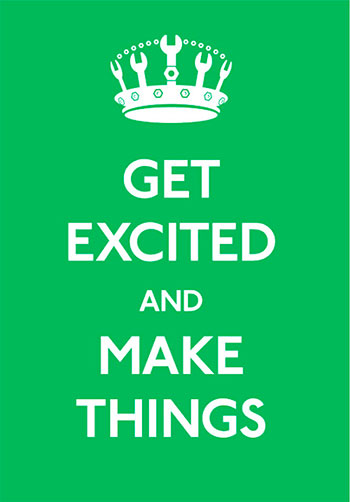 I’m going to try and use myself as a prototype for what the future of transmedia storytelling (and scholarship) looks like. I’m going to try and figure out what it means to be a participant in the new entertainment ecosystem, and then be that. And I’m going to try and do it more or less in public, to learn in public and prototype in public and grow in public.
So, yes. Welcome to my workshop. Hello again, world. It’s great to see you!

September 10, 2012
12:31 pm
A quick note to apologize for the silence around these parts. Long story short, my full-time gig as the Lead Narrative Producer for Microsoft Studios’ Narrative Design Team is sucking up most of my bandwidth, and I (obviously) can’t blog about most of what goes on there. Further, any bandwidth I have left over is taken up by this little beauty:
As of July 8, 2012, I’m a daddy. Meet Zoe Eowyn Long, my daughter – and by far the best thing I’ve ever made.
As the photo above implies, I have my hands full. 🙂 For the foreseeable future, I’ll hopefully add the occasional post here, sharing whatever adventures I’m up to (and whatever stuff I get a chance to make in my spare time), but it certainly won’t be with any degree of regularity. In the meantime, you can find me on Facebook and Twitter. Thanks for visiting!
|

